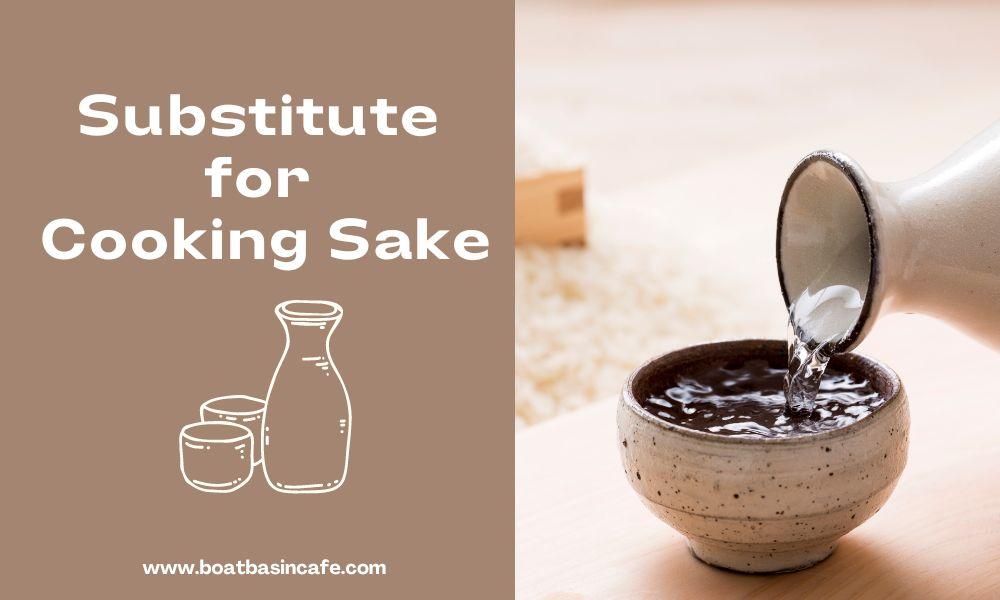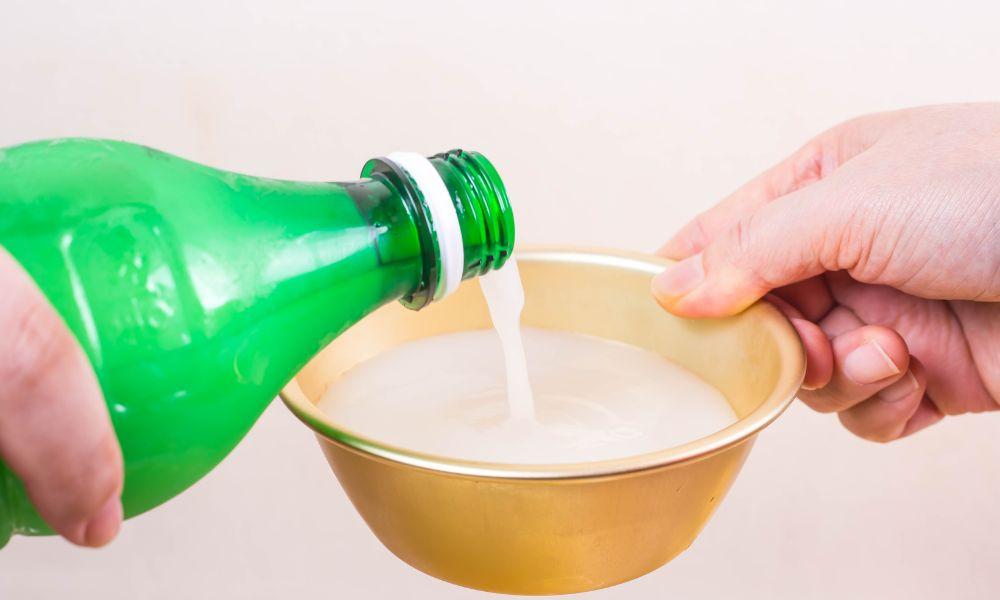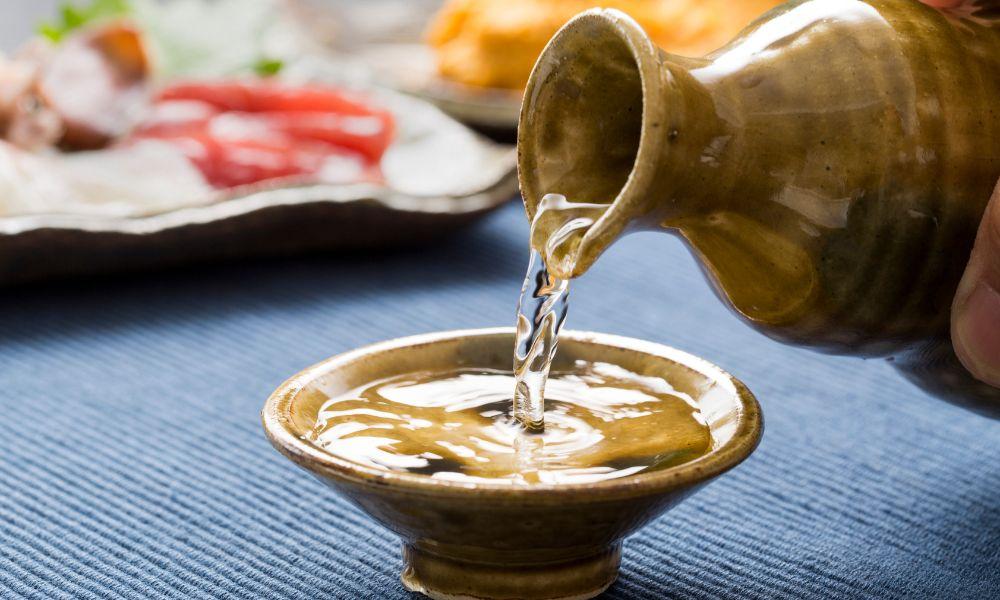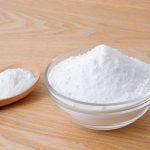Japanese cuisine is known for its delicious taste and unique cooking techniques. One of the key ingredients in Japanese cooking is sake, a traditional Japanese rice wine. It’s not only used as a drink but also a vital ingredient in Japanese cuisine, especially in cooking. Cooking sake is an essential ingredient in many Japanese dishes, but what if you don’t have it?
Don’t worry, as there are plenty of cooking sake substitutes you can use to replace it. In this article, we’ll explore some of the best cooking sake substitutes to enhance your Japanese cooking skills.

The Role of Sake in Japanese Cuisine
Sake, a traditional Japanese rice wine, plays a significant role in Japanese cuisine. It is not only enjoyed as a beverage but also used as a vital ingredient in various dishes. Cooking sake, in particular, is a popular ingredient that imparts a unique depth of flavor and umami to dishes like teriyaki, sukiyaki, and tempura.
Why Substitute Cooking Sake?
Sometimes, you may not have cooking sake on hand, or you may be looking for a non-alcoholic alternative due to dietary or religious reasons. In such cases, it’s essential to find an appropriate substitute that can mimic the flavors and characteristics of cooking sake without compromising the quality of your dish.
Factors to Consider When Choosing a Substitute

When looking for a suitable substitute for cooking sake, there are several factors to consider to ensure that the alternative you choose complements the dish you are preparing and meets your specific needs.
Flavor profile
The flavor profile of the substitute should closely mimic or complement the taste of cooking sake. This means that it should have a mild sweetness, some acidity, and a hint of umami. It’s essential to choose a substitute that maintains the balance of flavors in your dish without overpowering the other ingredients.
Alcohol content
Depending on your preferences or dietary restrictions, you may want to select a substitute with a similar alcohol content as cooking sake or opt for a non-alcoholic alternative. Keep in mind that the alcohol content may affect the overall taste and texture of your dish, so choose a substitute that aligns with your desired outcome.
Accessibility and affordability
Another factor to consider is the accessibility and affordability of the substitute. Choose an ingredient that is readily available in your local grocery store or supermarket and is reasonably priced. This will make it easier for you to incorporate the substitute into your recipes without breaking the bank or having to search for hard-to-find ingredients.
Dietary restrictions
Lastly, consider any dietary restrictions you or your guests may have. If you need to accommodate religious, allergy-related, or personal dietary preferences, make sure to select a substitute that meets these requirements. For example, if you need a non-alcoholic alternative, consider using rice vinegar or apple juice as a substitute for cooking sake.
Non-Alcoholic Substitutes for Cooking Sake
When looking for non-alcoholic substitutes for cooking sake, there are several options that can effectively mimic the flavor profile and characteristics of sake while remaining alcohol-free. Here are some popular non-alcoholic alternatives:
01 Rice Vinegar
Rice vinegar is a mild, slightly sweet, and tangy vinegar made from fermented rice. It is a staple in Asian cuisine and works well as a non-alcoholic substitute for cooking sake. When using rice vinegar in place of cooking sake, use a 1:1 ratio and consider adding a pinch of sugar to your recipe to balance the acidity and sweetness.
👩🍳Rice vinegar is a mild, slightly sweet, and tangy vinegar made from fermented rice – a staple in Asian cuisine. For example, when preparing a classic Chicken Teriyaki, replace sake with an equal portion of rice vinegar, adding a pinch of sugar if needed. The outcome is incredible, it delivers the required tangy flavor while maintaining the harmony of taste.
🍱Recipe Tip for Rice Vinegar:
In a recipe that calls for 50 ml sake, use 50 ml of rice vinegar and balance with an additional 1 tsp of sugar, if required.
02 Apple Cider Vinegar
Apple cider vinegar, made from fermented apple juice, has a fruity and tangy flavor that can work as a non-alcoholic substitute for cooking sake. Since it is more acidic than rice vinegar, you may need to dilute it with water and add sugar to achieve the desired balance of flavors. Use a 1:1 ratio of apple cider vinegar and water as a starting point, and adjust the sugar content to taste.
👩🍳Apple cider vinegar, made from fermented apple juice, works wonders in recipes requiring a stronger tang like the marinades for meat. For instance, in yakitori (Japanese skewered chicken), apple cider vinegar adds commendable tenderization and a tangy flavor.
🍱Recipe Tip for Apple Cider Vinegar:
Begin with a 1:1 ratio of apple cider vinegar and water, adjusting sugar content to balance acidity. If your recipe needs 50 ml of sake, use 25 ml of apple cider vinegar, 25 ml of water, and add sugar to taste.
03 White Grape Juice
White grape juice is a non-alcoholic alternative that can provide a mild sweetness and fruity flavor to your dishes. To use white grape juice as a substitute for cooking sake, replace the sake with an equal amount of white grape juice. You may also need to adjust the acidity of your recipe by adding a splash of vinegar or lemon juice to achieve the desired balance.
👩🍳Substituting cooking sake with white grape juice in sushi rice is found to give the dish a pleasantly fruity undertone.
🍱Recipe Tip for White Grape Juice:
An equal amount of white grape juice can be used to replace sake. To balance taste, add a splash of vinegar or lemon juice, if required.
04 Lemon or Lime Juice
Lemon or lime juice can be used as a non-alcoholic substitute for cooking sake, especially in recipes that call for a more acidic and tangy flavor profile. To use lemon or lime juice as a substitute, mix it with an equal amount of water and a sweetener, such as sugar or honey, to create a balanced flavor. The exact proportions may vary depending on the specific recipe, so adjust the amounts accordingly to achieve the desired taste.
👩🍳The tangy flavors of lemon or lime juice work impeccably in a Japanese Scallop Sashimi dish called Hotate. It blends perfectly with the freshness of the scallops, taking the flavor profile to another level.
🍱Recipe Tip for Lemon or Lime Juice:
Simply replace sake with an equal part of lemon juice combined with a bit of water and sweetener like sugar or honey.
Alcoholic Substitutes for Cooking Sake
If you’re looking for alcoholic substitutes for cooking sake, there are several options that can effectively replicate the flavor profile and characteristics of sake. Here are some popular alcoholic alternatives:
01 Dry Sherry
Dry sherry, a fortified wine from Spain, has a nutty and slightly sweet flavor profile that can complement Japanese dishes quite well. When substituting cooking sake with dry sherry, use a 1:1 ratio. If your recipe calls for one tablespoon of sake, replace it with one tablespoon of dry sherry.
👩🍳Try using dry sherry as a replacement for sake in Mapo tofu, a popular Japanese dish. The nutty and slightly sweet flavor of sherry enriches the Spicy Chili Bean Paste, keeping the dish’s essence intact.
🍱Recipe Tip for Dry Sherry:
If the recipe asks for 50 ml of sake, replace it with 50 ml of dry sherry.
02 White Wine
White wine is another suitable option for substituting cooking sake. While the flavor profile may differ depending on the type of white wine you use, it typically has a fruity, acidic, and sometimes slightly sweet taste. To substitute cooking sake with white wine, use a 1:1 ratio. Replace the amount of sake called for in your recipe with an equal amount of white wine. Opt for a white wine with a mild flavor, such as Pinot Grigio or Sauvignon Blanc, to prevent overpowering your dish.
👩🍳White wine, especially Pinot Grigio, can be used as an alternative to sake in recipes like Japanese White Wine and Mushroom Risotto to elicited flavorsome results.
🍱Recipe Tip for White Wine:
Use an equal amount of white wine in place of sake for a mild fruity flavor.
03 Vermouth
Vermouth, a fortified wine flavored with various botanicals, can also serve as a substitute for cooking sake. Dry vermouth, in particular, has a more subtle flavor that can work well in Japanese recipes. When using vermouth as a substitute, use a 1:1 ratio, replacing the sake with an equal amount of dry vermouth.
👩🍳Vermouth is excellent for substituting sake in mixed seafood recipes like Seafood Yakisoba. The botanical aroma enhances the seafood’s flavor, making it an enticing dish.
🍱Recipe Tip for Vermouth:
Use a 1:1 ratio when substituting with Vermouth.
04 Mirin
Mirin is a sweet Japanese rice wine that is often considered a close cousin of sake. It contains a lower alcohol content than sake and has a higher sugar content, giving it a sweeter taste. Mirin adds a mild sweetness and umami flavor to dishes, making it a great option for a cooking sake substitute. To use mirin as a substitute for cooking sake, replace the sake with an equal amount of mirin. Keep in mind that mirin is sweeter than sake, so you may need to adjust the other sweeteners in your recipe accordingly.
👩🍳Mirin is excellent as a sake substitute in recipes like Japanese caramelized Chicken Wings. The sweetness of Mirin heightens the caramelization process, making the chicken wings extra crispy and delicious.
🍱Recipe Tip for Mirin:
Replace each part of sake with an equal part of mirin. However, you may consider reducing the amount of other sweeteners.
Regional Substitutes for Cooking Sake
In addition to the previously mentioned substitutes, you can also find alternatives to cooking sake within the context of regional Asian cuisine. These alternatives can provide a similar flavor profile and characteristics while allowing you to explore different culinary traditions.
Here are two regional substitutes for cooking sake:
Chinese Rice Wine

Chinese rice wine, also known as Shaoxing wine or Huangjiu, is a popular ingredient in Chinese cooking. It is made from fermented rice and has a mild sweetness, earthy flavor, and a hint of umami. Chinese rice wine can be an excellent substitute for cooking sake, as it provides a similar depth of flavor to your dishes. To use Chinese rice wine as a substitute, replace the amount of cooking sake called for in your recipe with an equal amount of Chinese rice wine.
Korean Rice Wine (Cheongju or Makgeolli)

Korean rice wine, available in two main varieties, Cheongju and Makgeolli, can also be used as a substitute for cooking sake. Cheongju is a clear, refined rice wine with a mild taste and a subtle sweetness, making it a suitable alternative to cooking sake. On the other hand, Makgeolli is a milky, unfiltered rice wine with a slightly sweet, tangy, and effervescent flavor. Although Makgeolli has a more distinct taste, it can still be used as a substitute for cooking sake in certain recipes.
When using Korean rice wine as a substitute for cooking sake, replace the sake with an equal amount of Cheongju or Makgeolli. Keep in mind that the flavors of these wines may differ from those of cooking sake, so be prepared to adjust your recipe accordingly to achieve the desired taste.
Adapting Recipes to Use Sake Substitutes
When using a substitute for cooking sake, you may need to make some adjustments to your recipe to achieve the desired taste and texture.
Here are some tips for adapting your recipes when using sake substitutes:
01 Adjusting Sweetness Levels
Cooking sake has a mild sweetness that contributes to the overall flavor of your dish. When using a substitute, you may need to adjust the sweetness levels accordingly. If your substitute is sweeter than cooking sake, such as mirin or white grape juice, consider reducing the amount of sugar or other sweeteners in your recipe. Conversely, if your substitute is less sweet or more acidic, like rice vinegar or lemon juice, you may need to add a bit more sugar or sweetener to balance the flavors.
02 Balancing Acidity
The acidity of cooking sake helps to balance and enhance the flavors in your dish. When using a substitute, it’s important to maintain the right level of acidity. If your substitute is more acidic than cooking sake, such as lemon or lime juice, you can dilute it with water or reduce the amount of other acidic ingredients in your recipe. Alternatively, if your substitute is less acidic, like white grape juice, you may need to add a splash of vinegar or lemon juice to achieve the desired balance.
03 Managing Alcohol Content
The alcohol content of cooking sake can affect the overall taste and texture of your dish. When using an alcoholic substitute like dry sherry or white wine, the alcohol content should be similar to that of cooking sake, and no major adjustments will be needed. However, if you are using a non-alcoholic substitute, you may need to slightly adjust the cooking time or method to achieve the desired texture and flavor. For instance, if your recipe calls for simmering or reducing the cooking sake, you might need to cook the dish for a longer time or at a higher temperature when using a non-alcoholic substitute to ensure the flavors meld properly.
DIY Cooking Sake Substitute Recipes

If you can’t find a suitable cooking sake substitute at your local grocery store or want to experiment with creating your own alternatives, here are two DIY recipes for both non-alcoholic and alcoholic cooking sake substitutes:
Homemade Non-Alcoholic Cooking Sake
To create a homemade non-alcoholic cooking sake substitute, you can use the following recipe:
Ingredients:
- 1 cup water
- 3 tablespoons rice vinegar
- 2 tablespoons sugar
Instructions:
- In a small saucepan, combine the water, rice vinegar, and sugar.
- Heat the mixture over low heat, stirring until the sugar dissolves.
- Remove the saucepan from the heat and allow the mixture to cool to room temperature.
- Once cooled, your homemade non-alcoholic cooking sake substitute is ready to use. Replace the cooking sake in your recipe with an equal amount of this mixture.
Homemade Alcoholic Cooking Sake
If you prefer an alcoholic substitute, you can create a simple homemade alternative using the following recipe:
Ingredients:
- 1 cup white wine (such as Pinot Grigio or Sauvignon Blanc)
- 1 tablespoon rice vinegar
- 1 tablespoon sugar
Instructions:
- In a small saucepan, combine the white wine, rice vinegar, and sugar.
- Heat the mixture over low heat, stirring until the sugar dissolves.
- Remove the saucepan from the heat and allow the mixture to cool to room temperature.
- Once cooled, your homemade alcoholic cooking sake substitute is ready to use. Replace the cooking sake in your recipe with an equal amount of this mixture.
By creating your own DIY cooking sake substitutes, you can tailor the flavors to your preferences and ensure that your homemade alternatives closely mimic the taste and characteristics of traditional cooking sake.
helf life of common substitutes
Tips for Storing and Using Cooking Sake Substitutes
To maintain the quality, flavor, and effectiveness of your cooking sake substitutes, it’s essential to store and use them correctly. Here are some tips for proper storage techniques and the shelf life of common substitutes:
Proper Storage Techniques
- Store your cooking sake substitutes in a cool, dark place, away from direct sunlight and heat sources, such as stovetops or ovens. Exposure to light and heat can cause the flavors to degrade more quickly.
- Keep your substitutes in airtight containers or bottles with tightly sealed lids to prevent evaporation, oxidation, or contamination.
- If your substitute is temperature-sensitive, such as white wine or Korean rice wine, store it in the refrigerator to prolong its shelf life.
- Always use clean utensils when measuring or pouring your substitutes to avoid introducing contaminants that can spoil the product.
Shelf Life of Common Substitutes
| Type of Substitute | Shelf Life |
|---|---|
| Vinegars (rice vinegar, apple cider vinegar) | Long shelf life, can last for several years if stored correctly. Check the expiration date and monitor for changes in flavor or aroma. |
| Fruit juices (white grape juice, lemon or lime juice) | Shorter shelf life than vinegars, consume within a week or two after opening. Store in the refrigerator to extend shelf life. |
| Alcoholic substitutes (dry sherry, white wine, vermouth, mirin) | Generally have a shelf life of several months to a year when stored properly. Once opened, store in the refrigerator and use within a few weeks for best quality and flavor. |
| Regional substitutes (Chinese rice wine, Korean rice wine) | Shelf life can vary depending on specific characteristics. Refer to the manufacturer’s recommendations for storage and shelf life information. |
Conclusion
In this article, we have explored various substitutes for cooking sake that can be used when preparing Japanese dishes. These alternatives include non-alcoholic options, such as rice vinegar, apple cider vinegar, white grape juice, and lemon or lime juice, as well as alcoholic substitutes like dry sherry, white wine, vermouth, and mirin. Additionally, regional substitutes like Chinese rice wine and Korean rice wine can also serve as viable replacements for cooking sake.
It’s important to remember that finding the perfect substitute for cooking sake may require some experimentation, as the flavors and characteristics of each alternative can differ. By trying out different substitutes and adjusting recipes accordingly, you can maintain the authentic taste and essence of your Japanese dishes while accommodating various preferences and dietary restrictions.
Don’t be afraid to explore and experiment with these substitutes to find the one that works best for your specific needs. Happy cooking!
FAQs
Can I use regular drinking sake as a substitute for cooking sake?
Yes, you can use regular drinking sake as a substitute for cooking sake. However, keep in mind that drinking sake usually has a higher alcohol content and may be less salty than cooking sake. You may need to adjust the seasoning in your recipe accordingly to achieve the desired flavor balance.
Are there any health benefits to using cooking sake substitutes?
Using cooking sake substitutes can cater to different dietary restrictions and preferences. For example, using non-alcoholic substitutes can be beneficial for people who want to avoid consuming alcohol, while opting for low-sodium alternatives can be advantageous for those following a low-sodium diet.
How do I adjust the flavor of my dish when using a cooking sake substitute?
When using a cooking sake substitute, you may need to adjust the sweetness, acidity, or saltiness of your dish to achieve the desired taste. This can be done by adding or reducing the amount of sugar, vinegar, or salt in your recipe, depending on the specific characteristics of your chosen substitute.
What is the difference between cooking sake and mirin?
Both cooking sake and mirin are Japanese rice wines used in cooking. However, mirin has a higher sugar content and a lower alcohol content compared to cooking sake, making it sweeter and less alcoholic. Mirin is often used to add a mild sweetness to dishes, while cooking sake is used for its subtle sweetness and umami flavor.
Can I use a cooking sake substitute in any recipe that calls for cooking sake?
In most cases, you can use a cooking sake substitute in recipes that call for cooking sake. However, it’s essential to choose an appropriate substitute based on the specific requirements of your dish and adjust your recipe as needed to achieve the desired flavor and texture. Experimenting with different substitutes and adjusting your recipes accordingly will help you find the best alternative for your specific needs.








